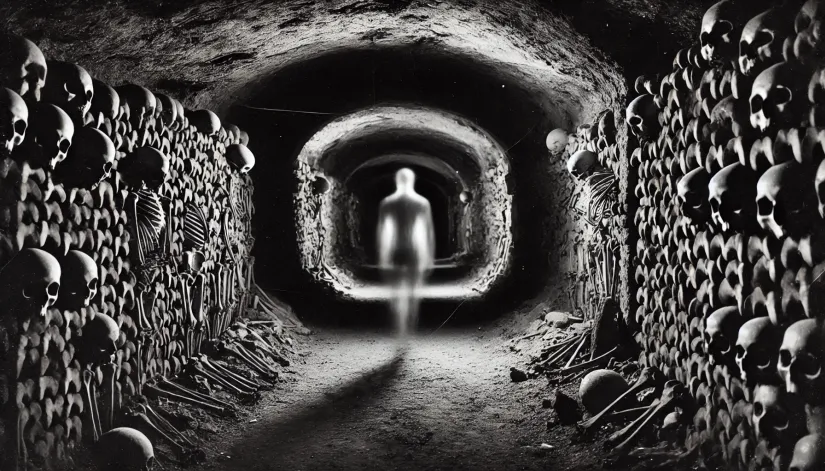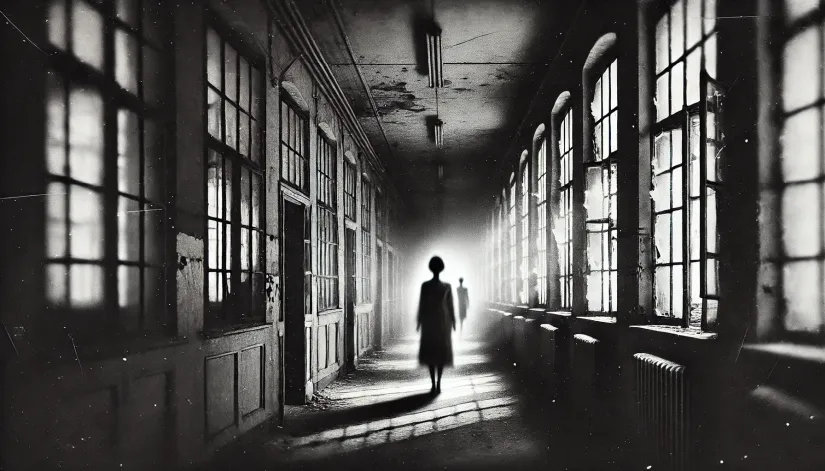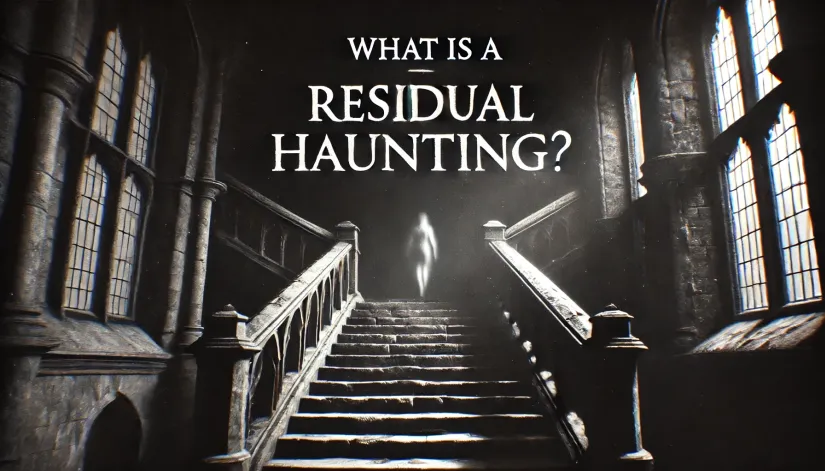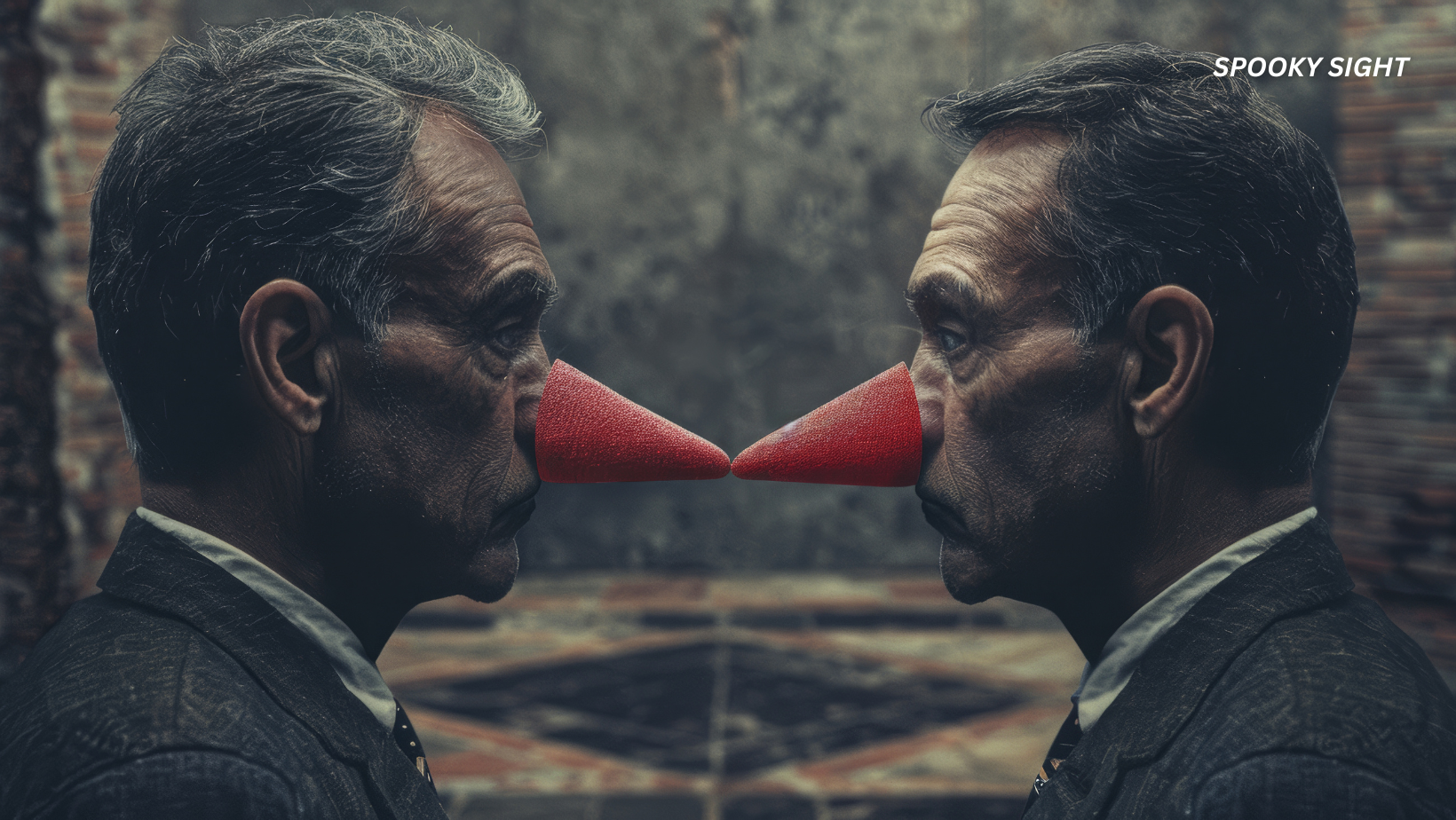“What is a residual haunting and how is it different from a normal haunting?” I get this question all the time. However, explaining the concept is not always easy.
Generally speaking, residual hauntings are some of the most bizarre—and honestly, most misunderstood—types of paranormal experiences. Forget the dramatic ghostly interactions you’ve seen in horror movies. Residual hauntings are different.
But what exactly makes these hauntings so unique compared to all the other types of hauntings out there? Well, that’s the interesting part! Let’s dig in and see what clues help us really understand these mysterious events.
In this article:

What is a Residual Haunting?
Residual hauntings—sometimes called “psychic impressions”—involve an energy imprint left behind by people, animals, or even events. So, the ghost that causes the residual haunting could be a person or an animal, both leaving behind a mark of their presence or activity.
I think many of us picture a ghost doing the same thing over and over, right? Well, that’s pretty much it for residual hauntings. It’s all about replay—an emotionally charged event gets imprinted upon a place, and boom, it repeats endlessly.
Related: Residual Energy vs. Residual Haunting—What’s the Difference?
Frederic W. H. Myers, a famed paranormal investigator, actually called these events a “vertical afterimage.” It’s the idea that strong emotional energy can leave a lasting picture in the atmosphere—just like an afterimage in your mind.
However, these hauntings aren’t limited to just visuals either. They can be both seen and heard. Disembodied footsteps are a classic example. But so is something like splashing water where there’s no water. Take, for instance, the Queen Mary’s Second Class Pool Room. Even though the pool has been empty for years, visitors still swear they hear the unmistakable sound of splashing water.
Related: Is Ectoplasm Real? Real Ghost Evidence or Mere Trickery?
The idea that emotional energy could be imprinted on physical locations was proposed by Thomas Charles Lethbridge in his 1961 book Ghost and Ghoul. Here, Lethbridge suggested that intense emotional events could imprint energy on the environment, leading to phenomena similar to residual hauntings.
His ideas helped push forward what we now call the Stone Tape Theory, which suggests that emotionally intense events—especially those tied to trauma—imprint themselves in such a way that they’re replayed repeatedly, kind of like a movie scene looping forever.

Where Are Residual Hauntings Most Likely to Happen?
Where do residual hauntings happen? Well, it’s no exact science, but these hauntings generally occur at places with a lot of history, mainly where emotionally charged or traumatic events took place. Crime scenes, cemeteries, prisons, asylums, hospitals, battlefields, historic buildings, places where violent events happened… all these can generate residual hauntings.
Here are some notable examples of locations associated with residual hauntings:
- Dragsholm Castle, Denmark: Known as one of the most haunted castles in Europe, visitors report seeing the White Lady, thought to be the spirit of a young noblewoman imprisoned by her father.
- Himeji Castle, Japan: The legend of Okiku, a servant girl unjustly executed, replays at this historic castle where her spirit is said to count dishes night after night.
- Ancient Ram Inn, Gloucestershire, England: Built on a pagan burial ground, this location is known for repeated sightings of a ghost innkeeper and other restless spirits.
- Monte Cristo Homestead, New South Wales, Australia: This historic property is known for its ghostly apparitions—residual hauntings linked to tragic events involving past residents.
- Ballygally Castle, Northern Ireland: This castle is allegedly haunted by Lady Isabella, who many believe still roam the halls after her tragic death centuries ago.
- Banff Springs Hotel, Alberta, Canada: Guests have reported seeing the Ghost Bride, endlessly walking down the staircase as if replaying her tragic wedding night.
- Paris Catacombs, France: Known for the countless souls laid to rest here, visitors have reported seeing ghostly figures wandering the dark tunnels.
- Haw Par Villa, Singapore: Once an amusement park, people have reported ghostly sights related to the macabre depictions of Chinese mythology.
- Greyfriars Kirkyard, Edinburgh, Scotland: The spirit of Sir George Mackenzie is said to still roam the cemetery, endlessly repeating the actions that made him feared during life.
- Bran Castle, Romania: Associated with Vlad the Impaler, sightings of ghost soldiers endlessly marching have been reported.
- Sorin Hall, University of Notre Dame, USA: Students and staff have reported seeing the spirit of a former priest replaying his evening routine in the dormitory hall.
- Castle Fraser, Scotland: Reports include a young woman who fell to her death, with visitors seeing her ghost repeating the tragic fall.
- Fairmont Banff Hotel, Canada: An elderly bellman, thought to be Sam the Bellman, is still seen helping guests before disappearing, despite having passed away decades ago.
- Bodelwyddan Castle, Wales: With its rich history, visitors have reported ghostly figures repeating actions from historical battles.
- Hellfire Club, Dublin, Ireland: Known for its dark past, the ghostly remnants of rituals are said to replay here.
- The Whaley House, San Diego, California: Thomas Whaley’s ghost is said to replay scenes of daily activities from his life.
- Poveglia Island, Italy: Once a quarantine station, the restless spirits of plague victims are said to wander the island, repeating their final moments.
- Larnach Castle, New Zealand: People claim to have seen the ghost of Eliza Larnach endlessly walking the castle’s corridors.
- Osorezan Mountain, Japan: Known as one of Japan’s most haunted places, residual apparitions of pilgrims are said to appear along the path leading to the temple.
- Aradale Asylum, Victoria, Australia: The spirits of former patients reportedly roam the grounds, repeating the same actions over and over.
How to Easily Identify a Residual Haunting?
How do you know if you’re dealing with a residual haunting? Residual hauntings have a few distinct traits that make them stand out from other paranormal activities:
- Passive and Repetitive: If you notice the same thing happening repeatedly—like footsteps on a staircase every night at the same time—chances are, it’s a residual haunting. Unlike intelligent hauntings where spirits interact, residual hauntings just replay. No changes, no deviations.
- Emotional or Traumatic Ties: These hauntings usually stem from moments of intense emotion. It could be a battle, a tragic death, or even an emotionally charged routine.
- Environmental Triggers: Some conditions seem to make these hauntings more likely to happen. High humidity, specific weather patterns, or even the presence of minerals (thanks, Stone Tape Theory) can all make these scenes more likely to “replay.”

How Residual Hauntings Work
Okay, so how do they work? No one knows for sure, but there are a few popular theories.
One of the most well-known is the Stone Tape Theory I mentioned above, which suggests certain materials—like stones—can “record” moments of intense emotion and later replay them. Sort of like an emotional videotape embedded into a place.
This concept hit the mainstream thanks to a 1972 British TV play titled The Stone Tape, but the theory has been around a lot longer.
Another possibility? The energy from those intense moments somehow embeds itself in the environment, forming an imprint that pops up under the right conditions.
Harry Price, a well-known paranormal researcher from the 20th century, made significant contributions to understanding residual hauntings. However, his work wasn’t without controversy.
Related: Paranormal Cold Spots: What Are They and Why Do They Happen?
Price was primarily known for his investigation of the Borley Rectory, which he began in 1929. Often called the “most haunted house in England,” Borley Rectory became a central focus of Price’s career. Here, he documented various phenomena, including ghostly apparitions, unexplained footsteps, and messages that seemingly appeared on the walls.
However, Price’s investigations (including the Borley case, the Rosalie séance in 1937, and his research at Ballyheigue Castle) attracted criticism and debates about authenticity. Critics argued that some of his methods were questionable, with claims that he might have exaggerated or even fabricated certain elements to garner public interest.
Despite the controversy, his work helped popularize the idea of residual hauntings. His emphasis on emotionally charged events leaving imprints in locations shaped much of what we think about residual hauntings today.
Residual Hauntings vs Other Types of Hauntings
Now, residual hauntings aren’t the only type of ghostly activity out there. They’re actually quite different from other types of hauntings, each with their own unique characteristics:
- Intelligent Hauntings: These are your classic movie-style hauntings. The spirit seems aware and capable of interacting with the living. It might move objects, respond to questions, or even follow people. One well-known example is the Bell Witch Haunting in Tennessee, where the spirit responded to questions and even interacted with the family—classic intelligent haunting behavior.
- Poltergeist Activity: Poltergeists are noisy and often pretty disruptive. Think of moving objects, knocking sounds, or even physical attacks. Unlike residual hauntings, poltergeists are aware of their surroundings, and their activity can escalate over time.
- Demonic Hauntings: These are the types marked by aggressive or malicious activity. Demonic hauntings are all about negative entities bent on causing fear or harm. These hauntings usually start subtly and then escalate to downright hostile behavior.
- Shadow People Hauntings: Shadow people are seen as dark, humanoid figures. They move quickly through space and are sometimes thought to be conscious and capable of observing the living. They aren’t really known for communication, though, just presence.
- Portal Hauntings: Some paranormal researchers believe these hauntings involve a kind of opening between dimensions. Think of it as a doorway through which entities travel back and forth. Portal hauntings can involve all sorts of paranormal activity, including residual and intelligent.
Where to Go From Here?
Residual hauntings are super interesting, and you’re actually more likely to encounter one of these than some of the other types of hauntings. Unlike poltergeists or demonic hauntings (which are much rarer), residual hauntings are relatively common because they’re all about places soaked with past emotional energy.
The best part? They aren’t dangerous. They don’t interact with the living or try to cause harm; they simply replay past events like an old record stuck on repeat.
So, what should you do if you encounter a residual haunting? Honestly, not much. There’s no need to be afraid. These imprints are harmless—they’re not trying to communicate. And they won’t follow you home.







